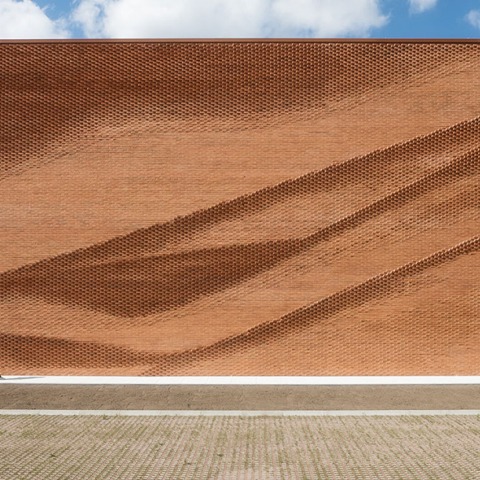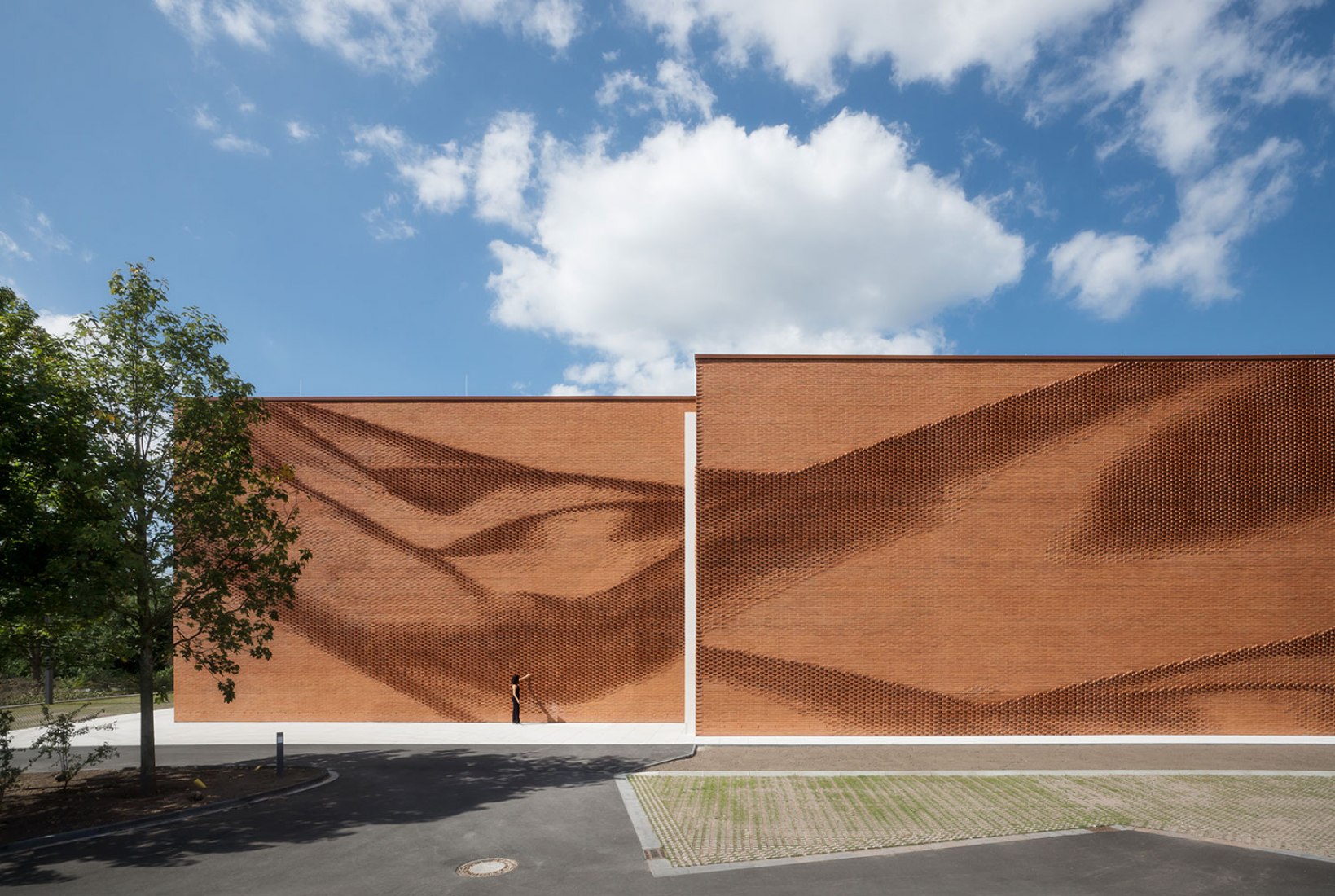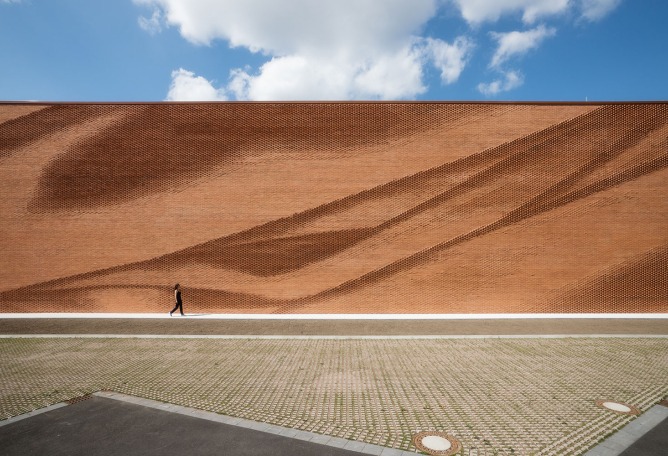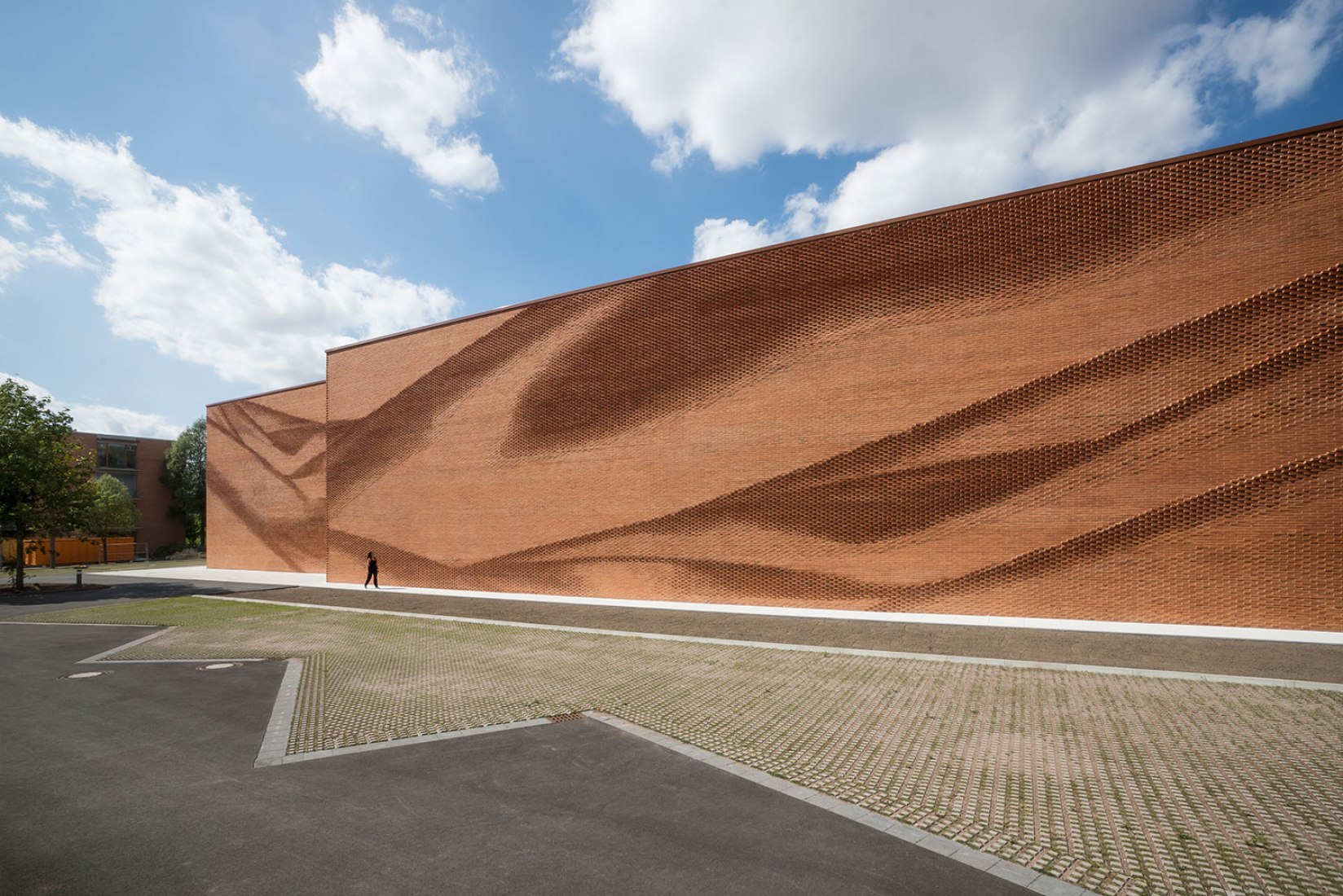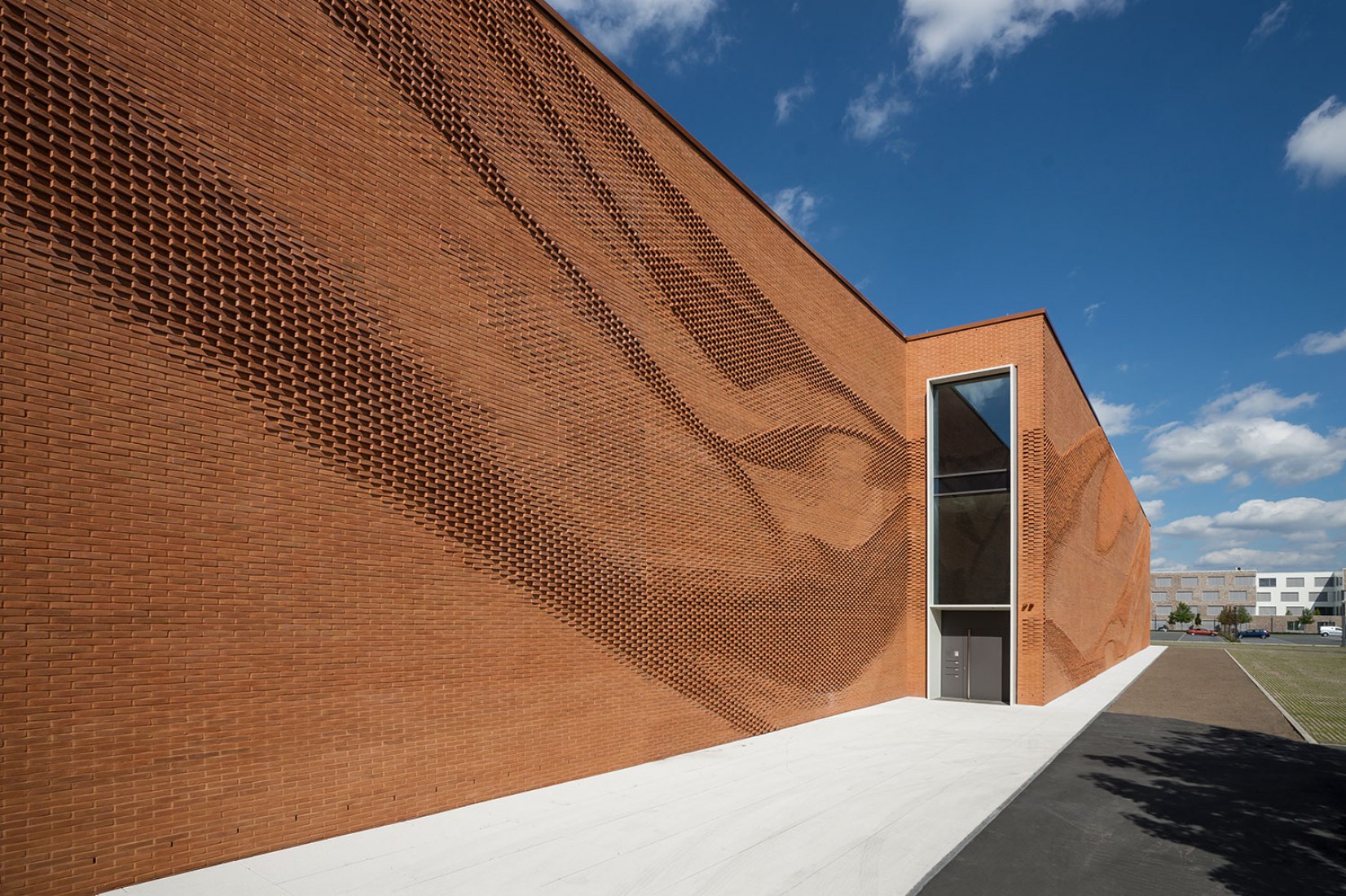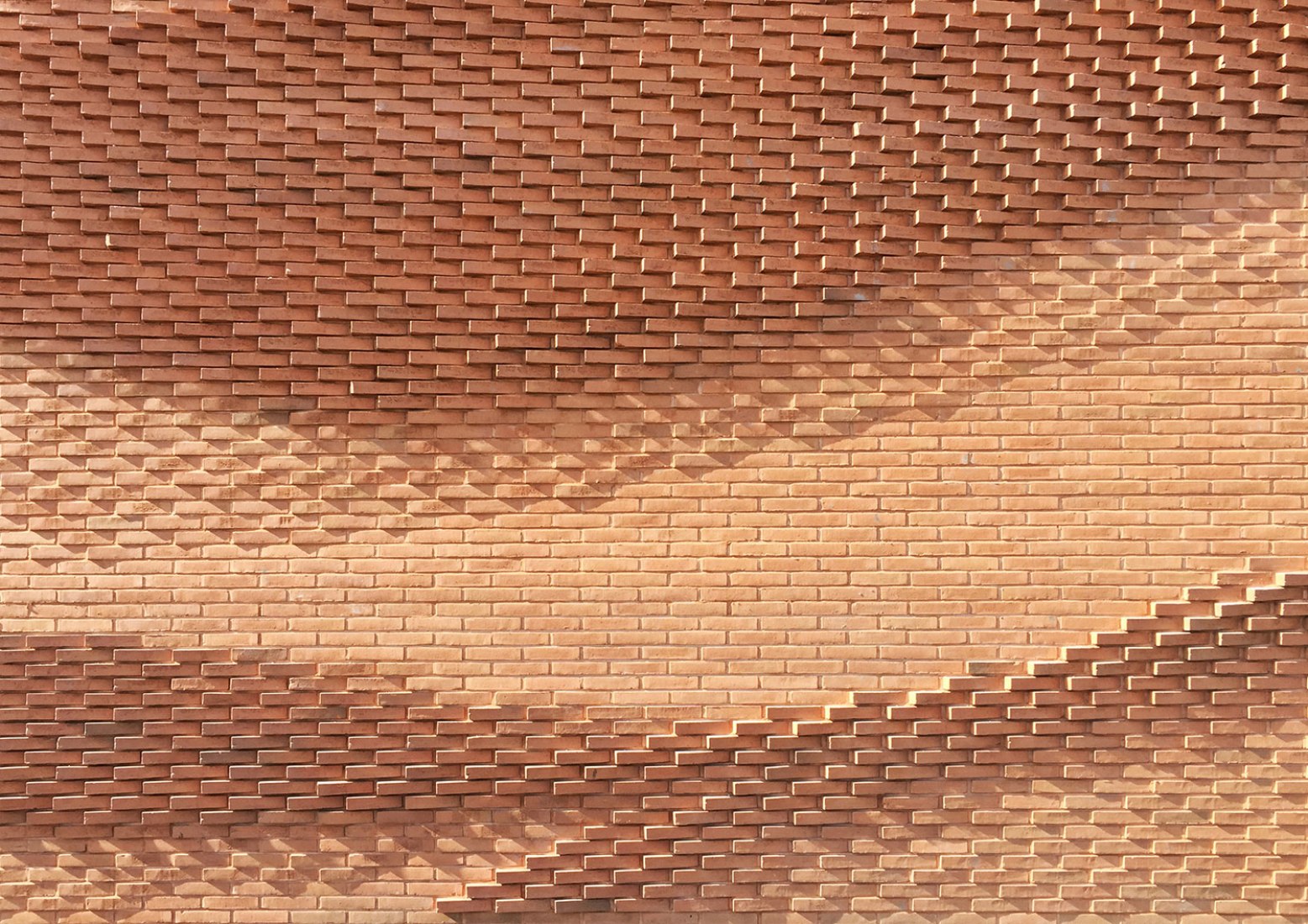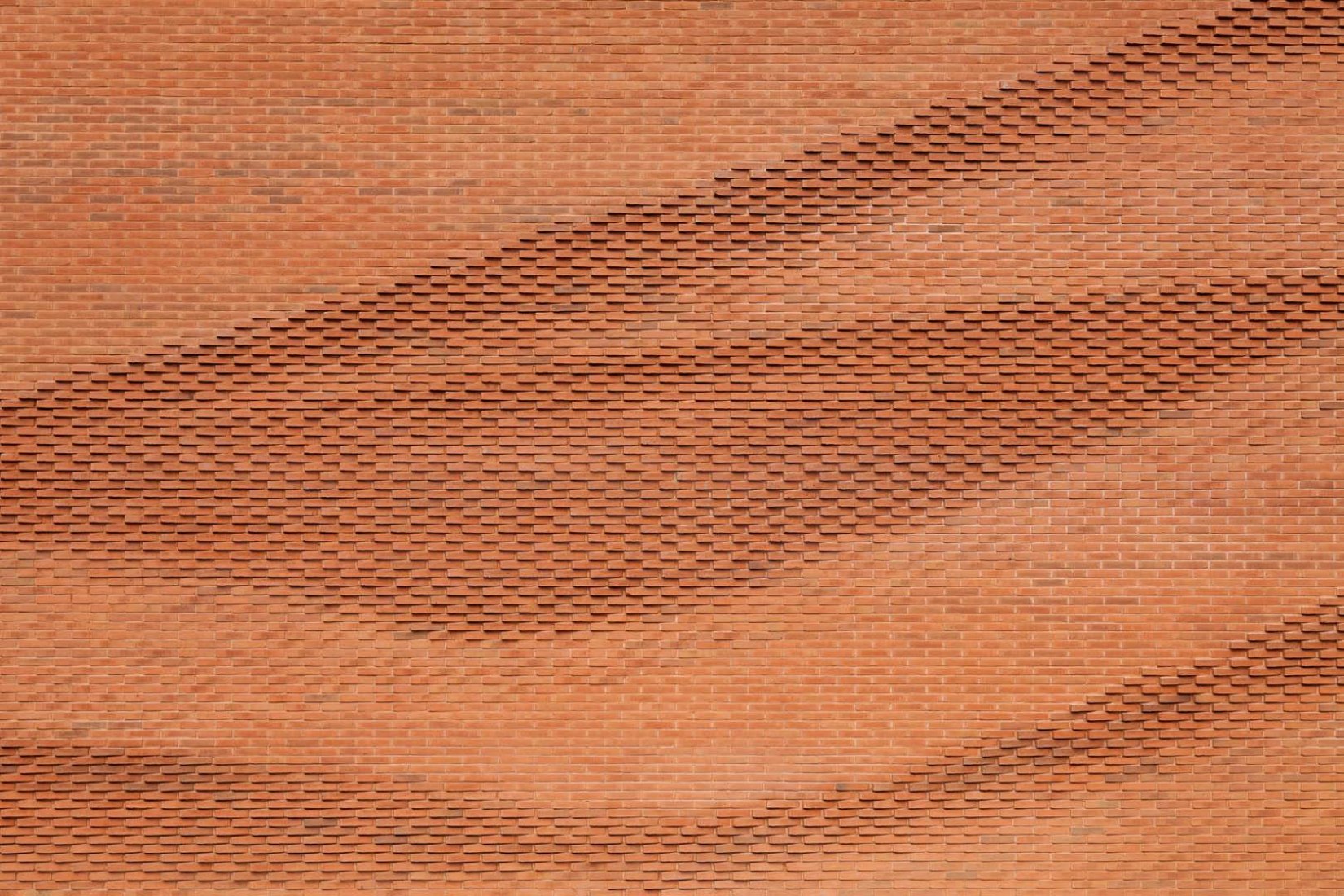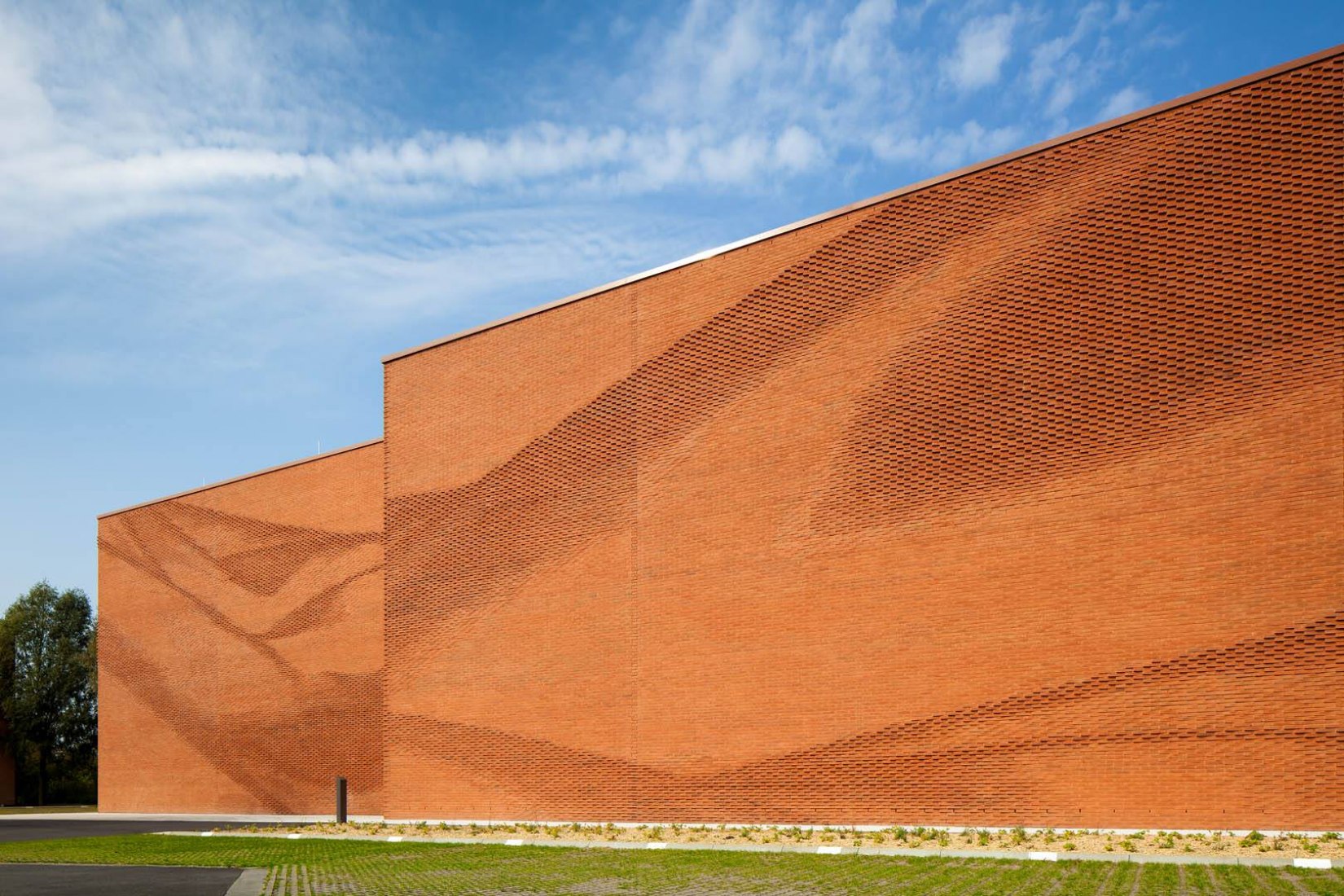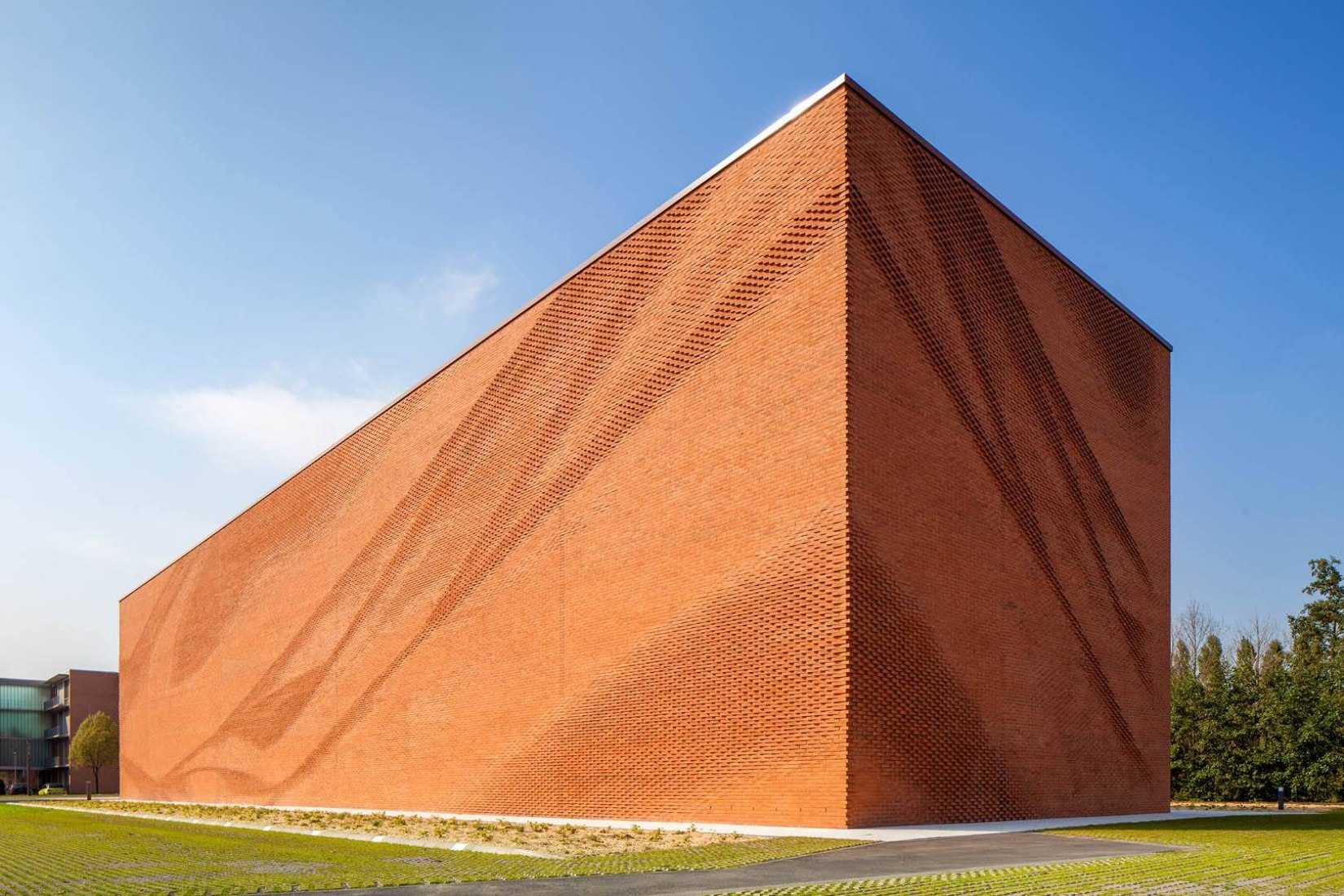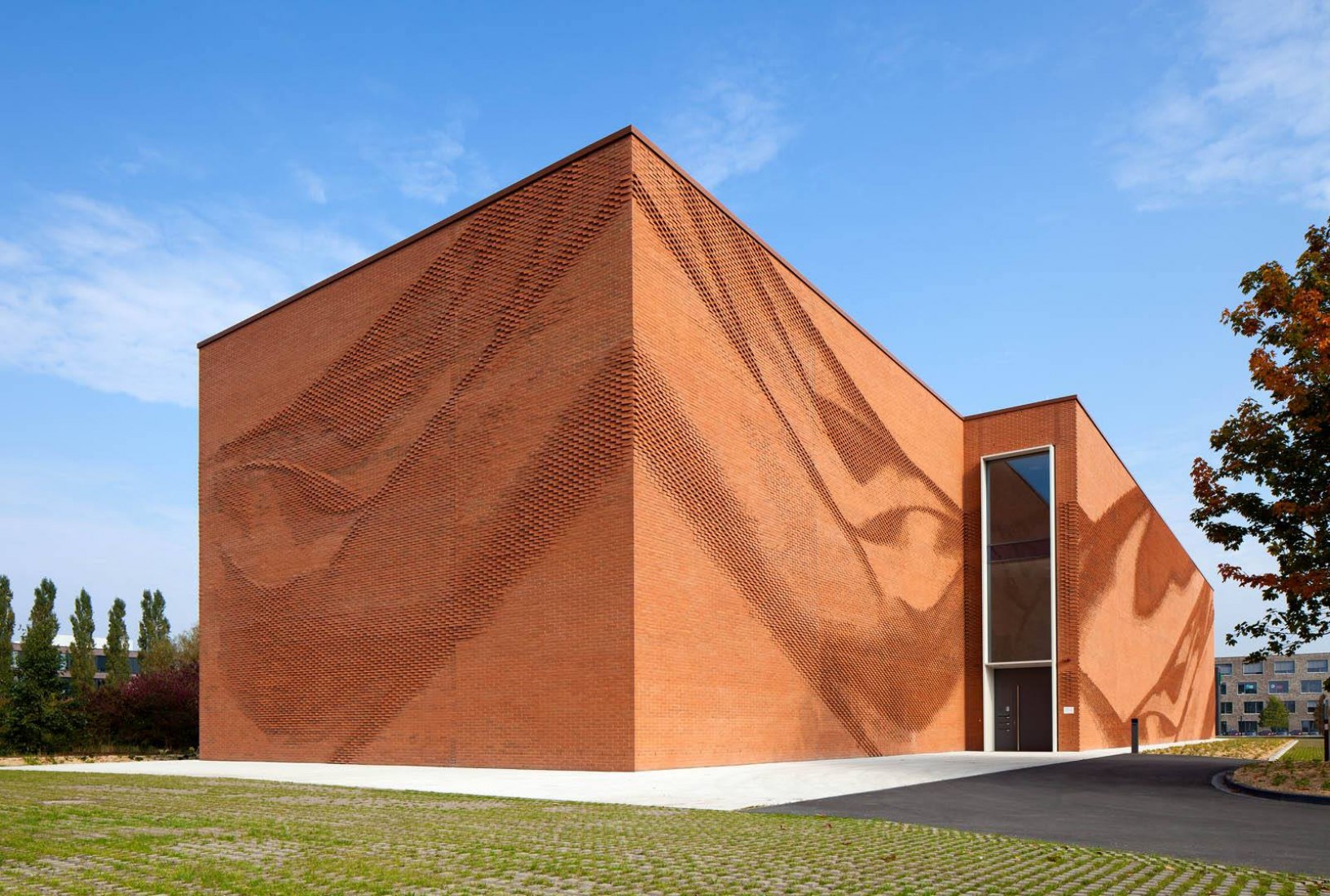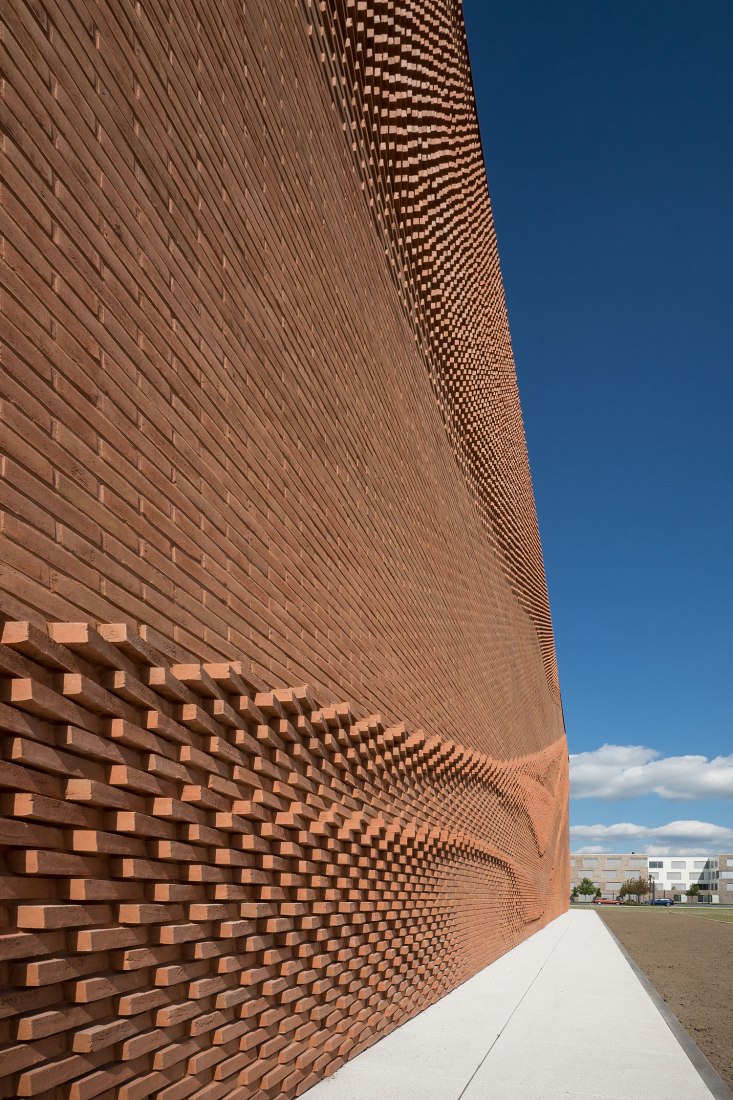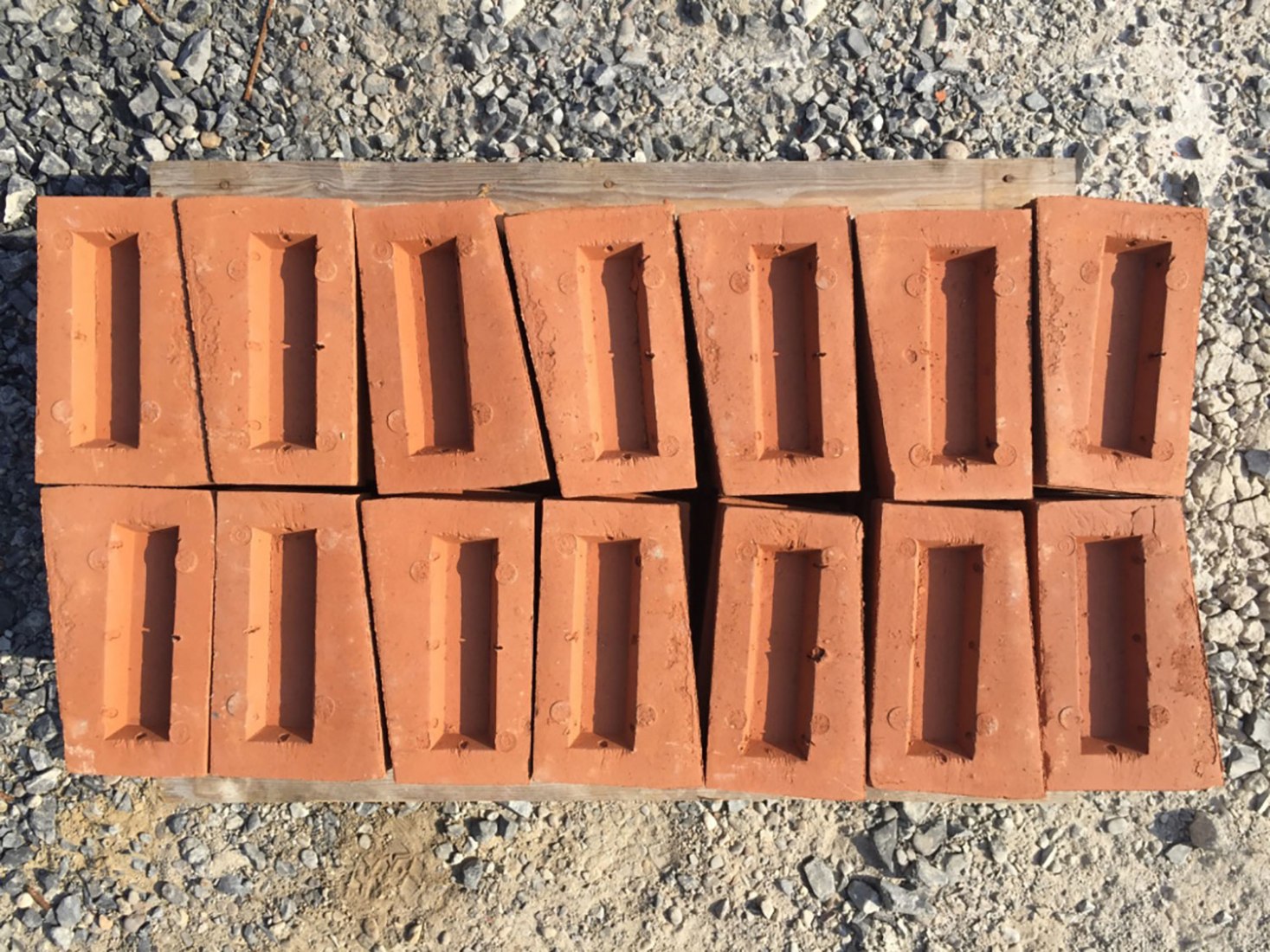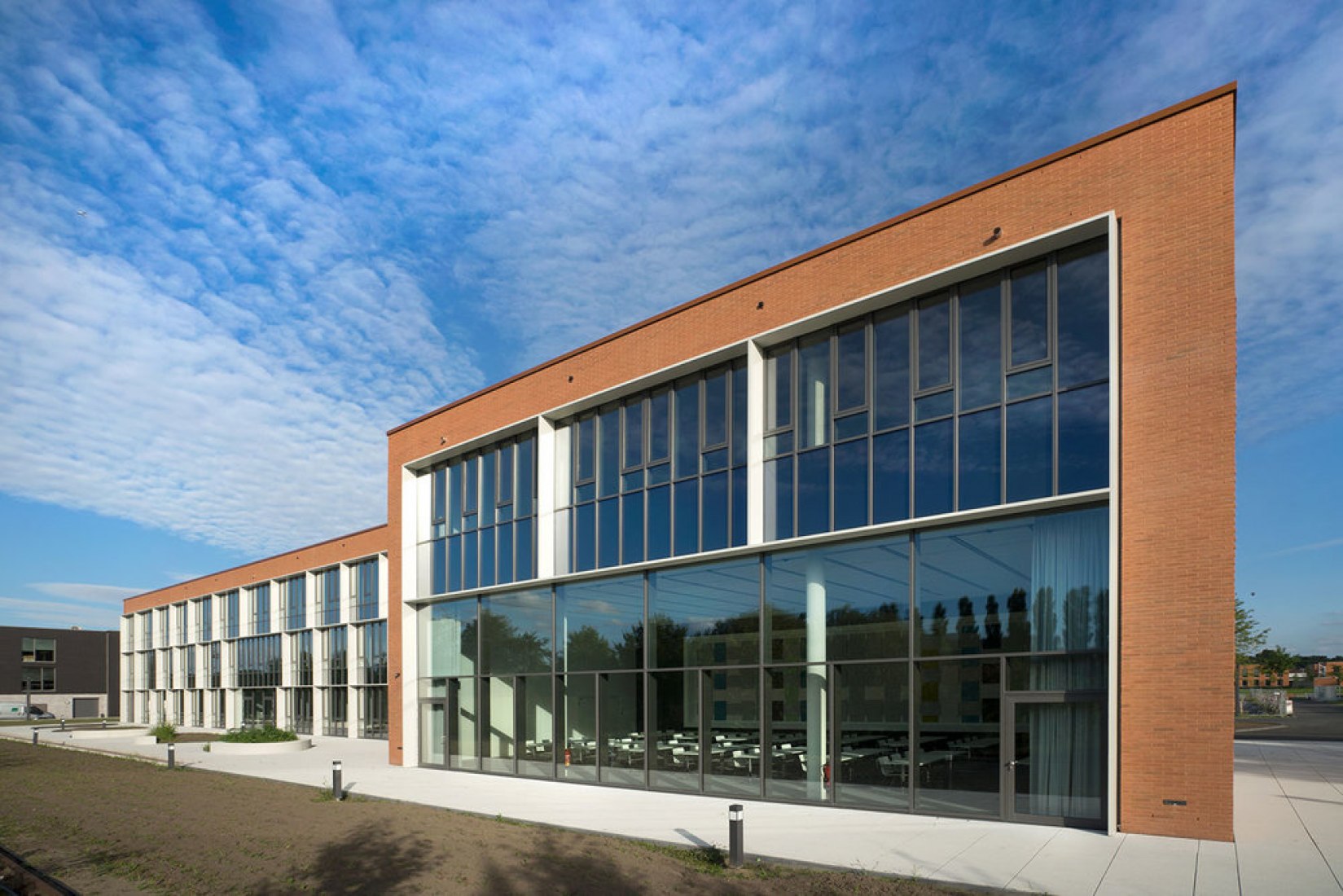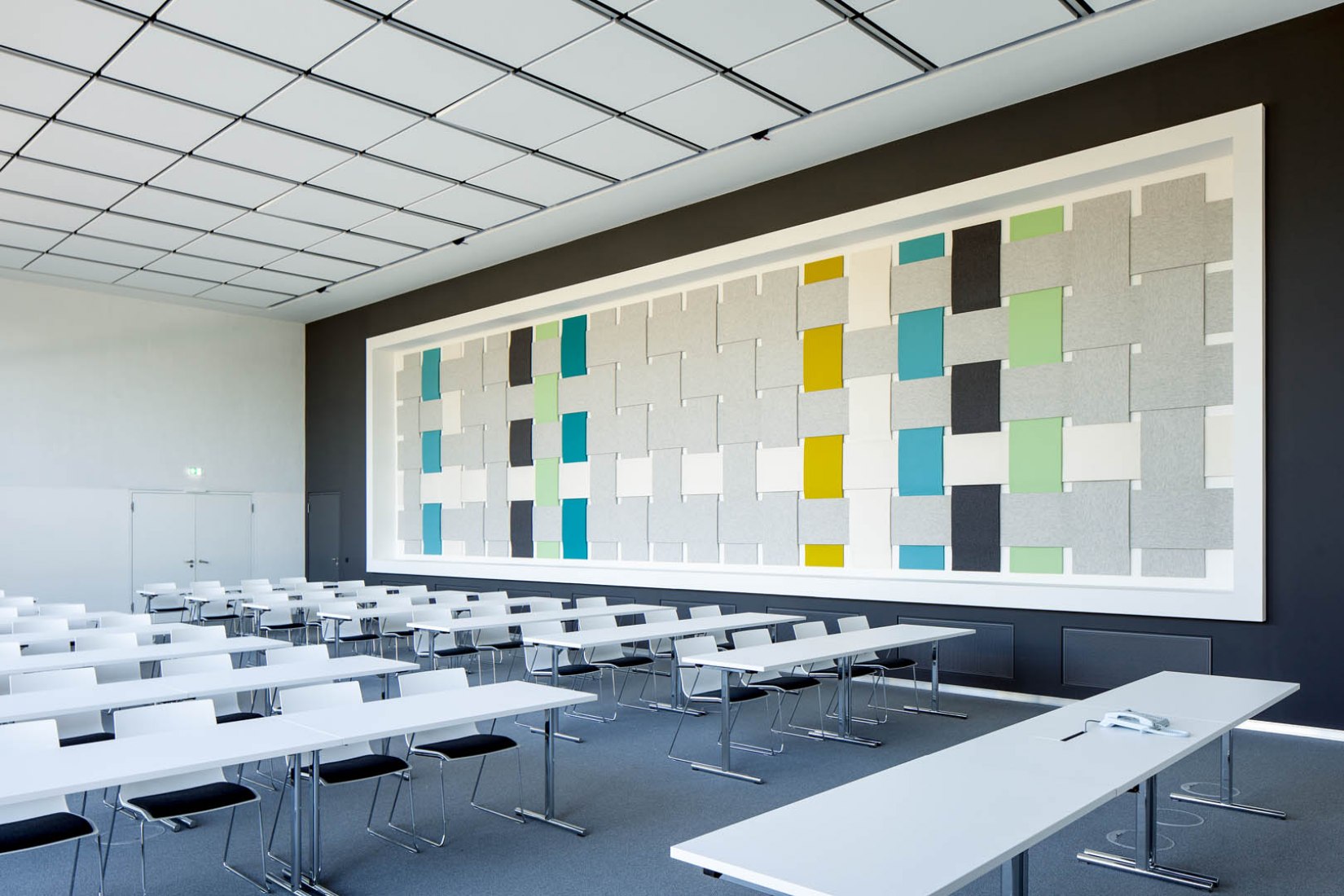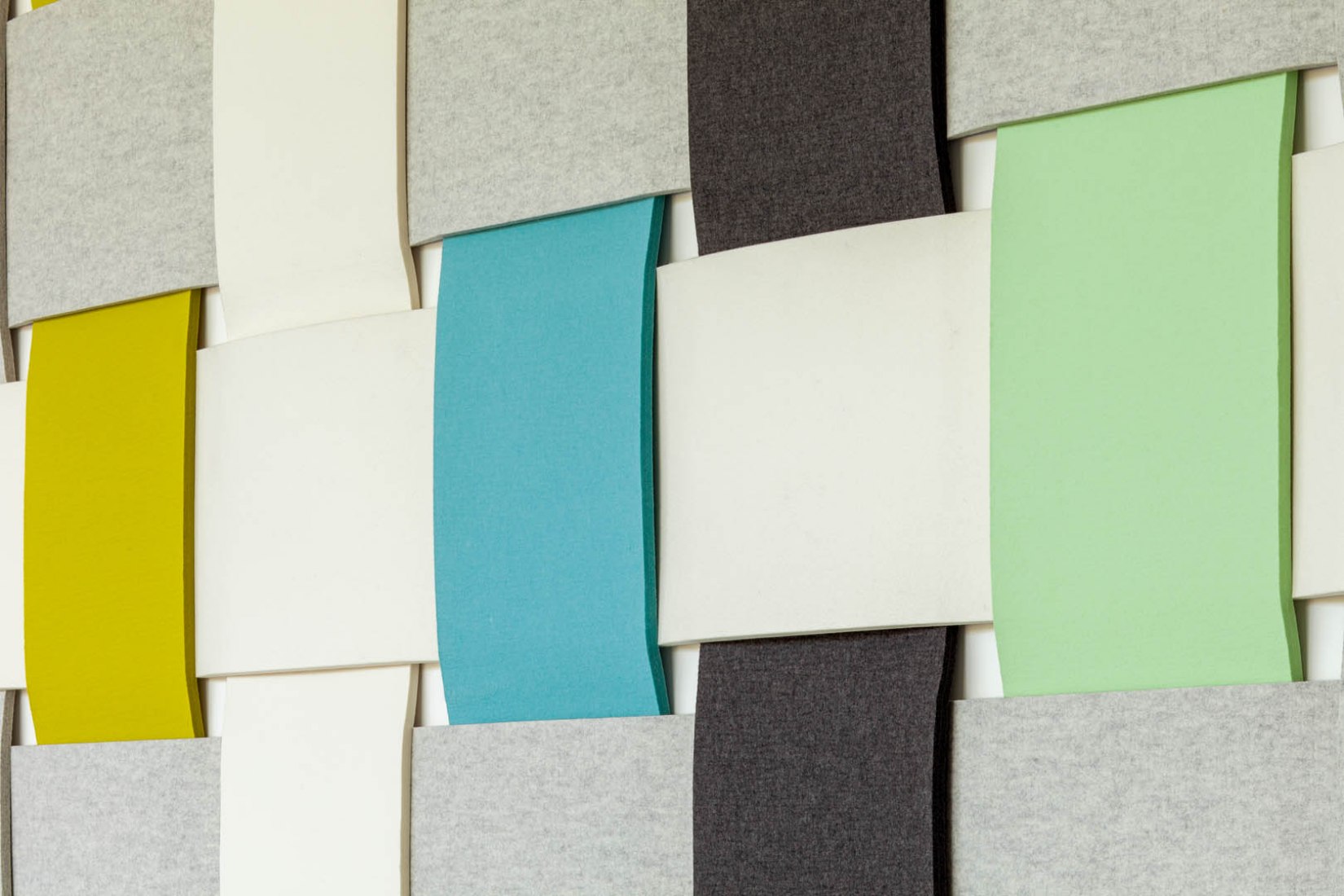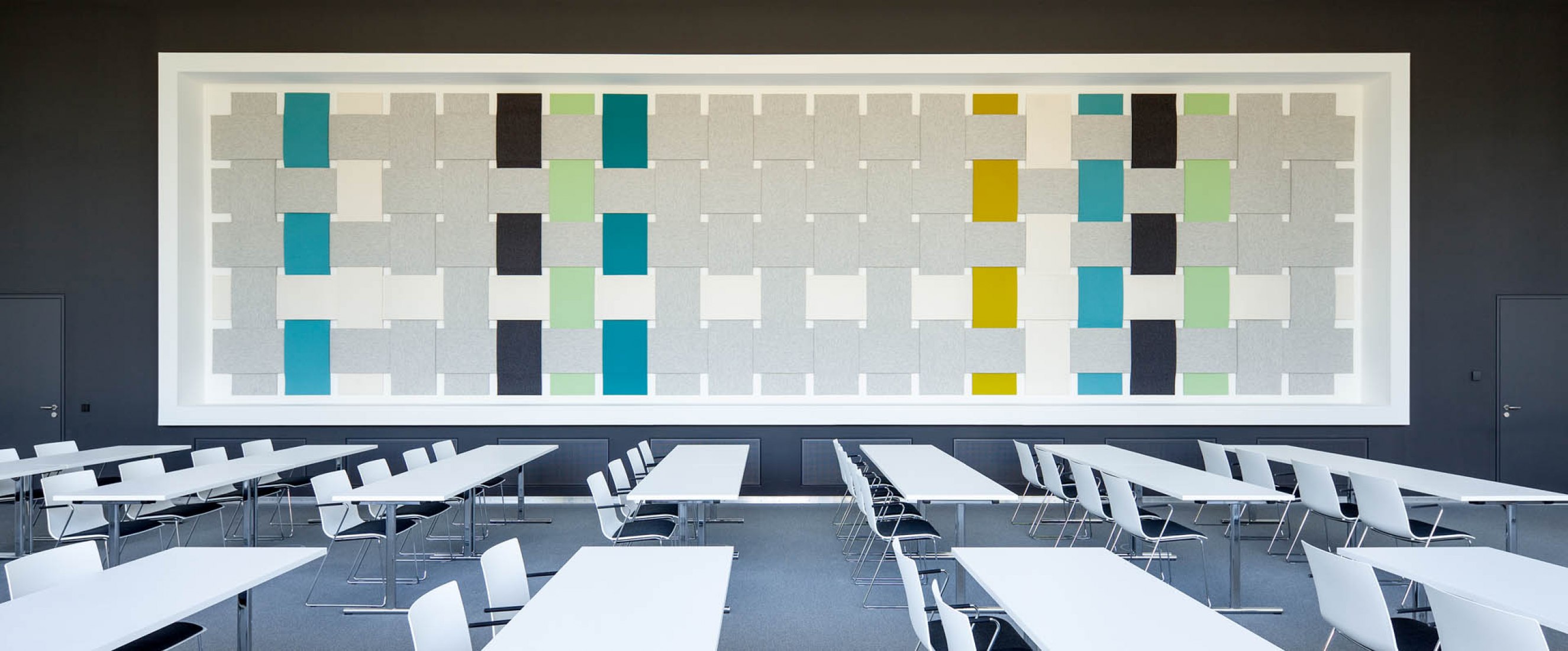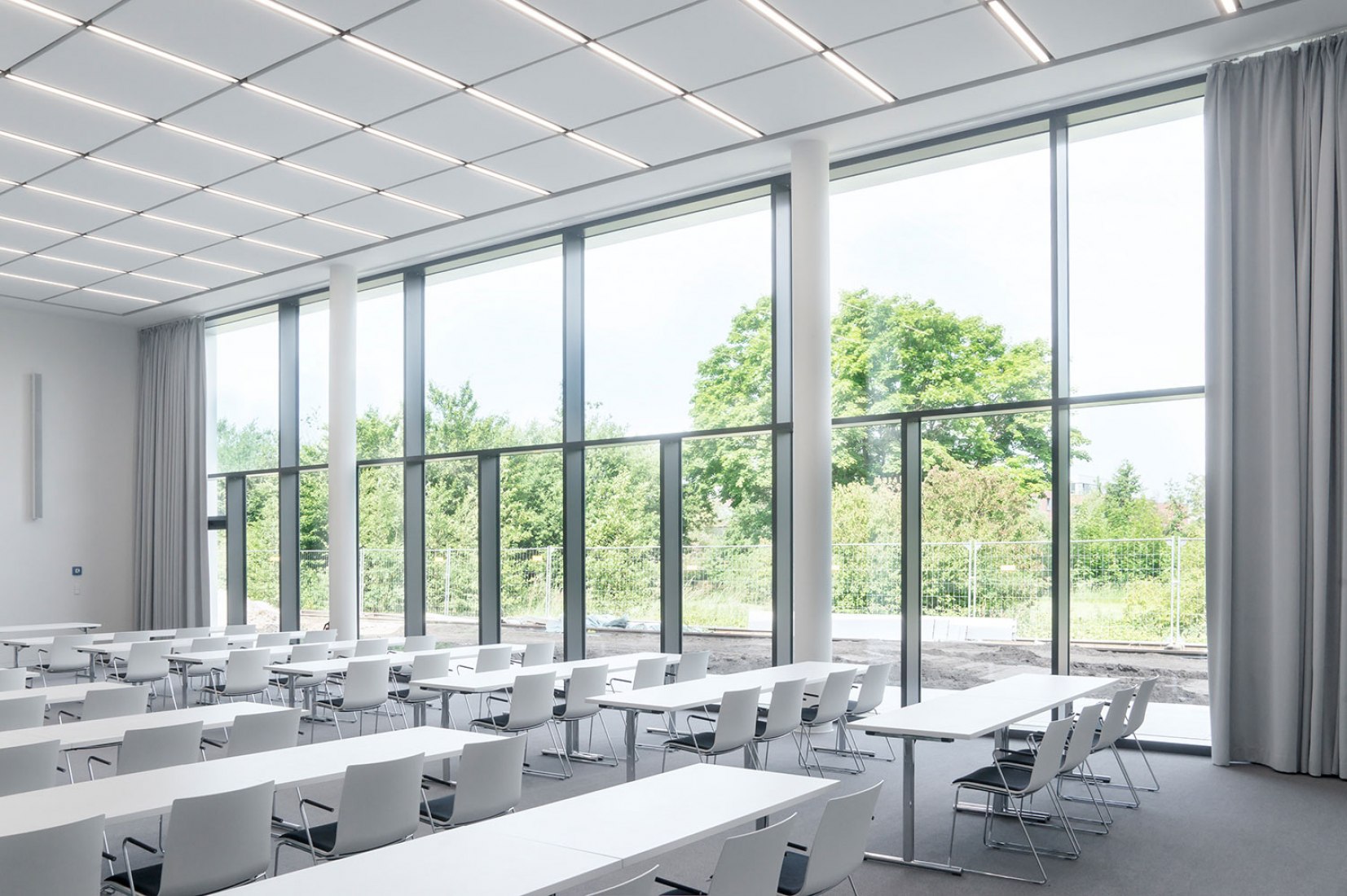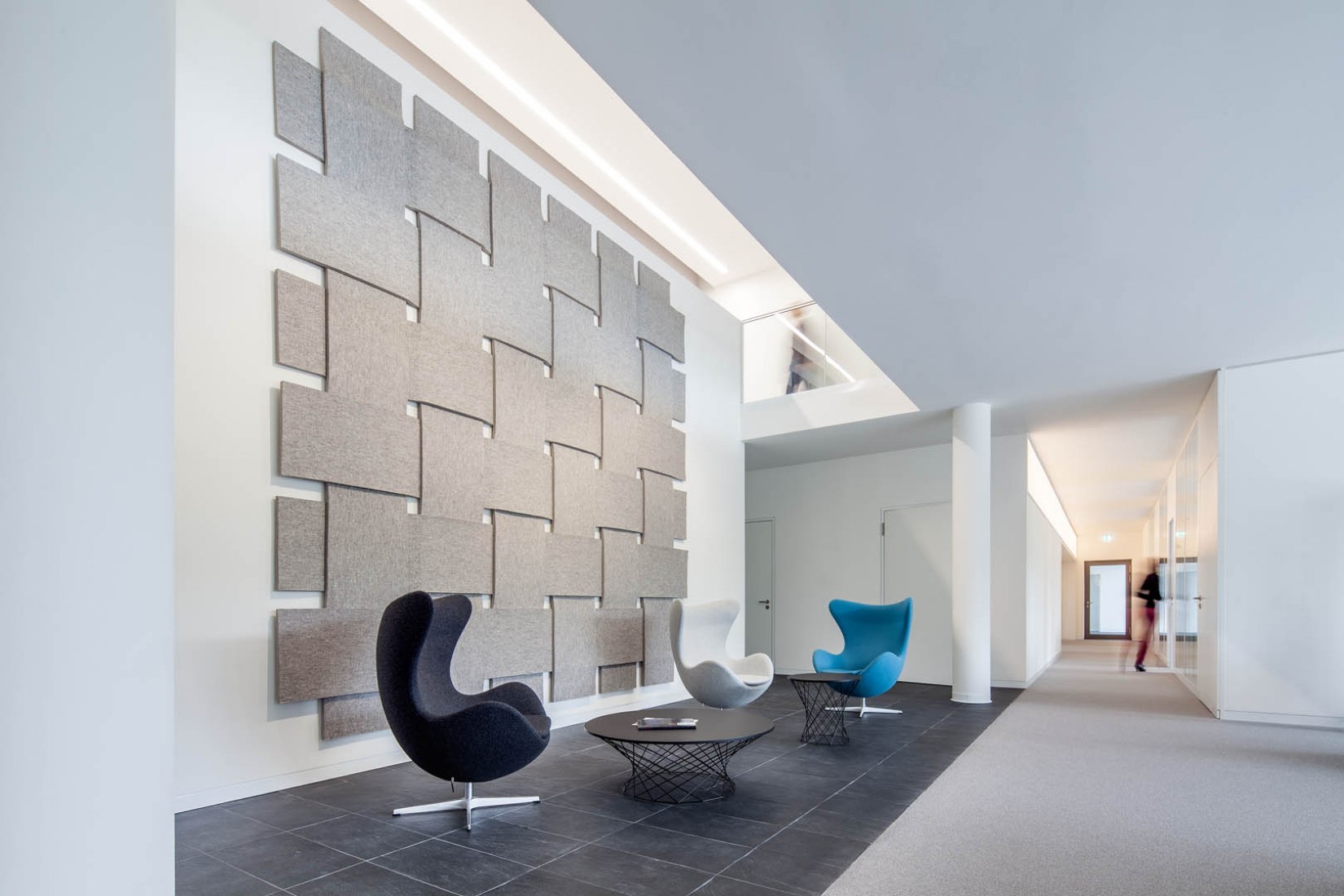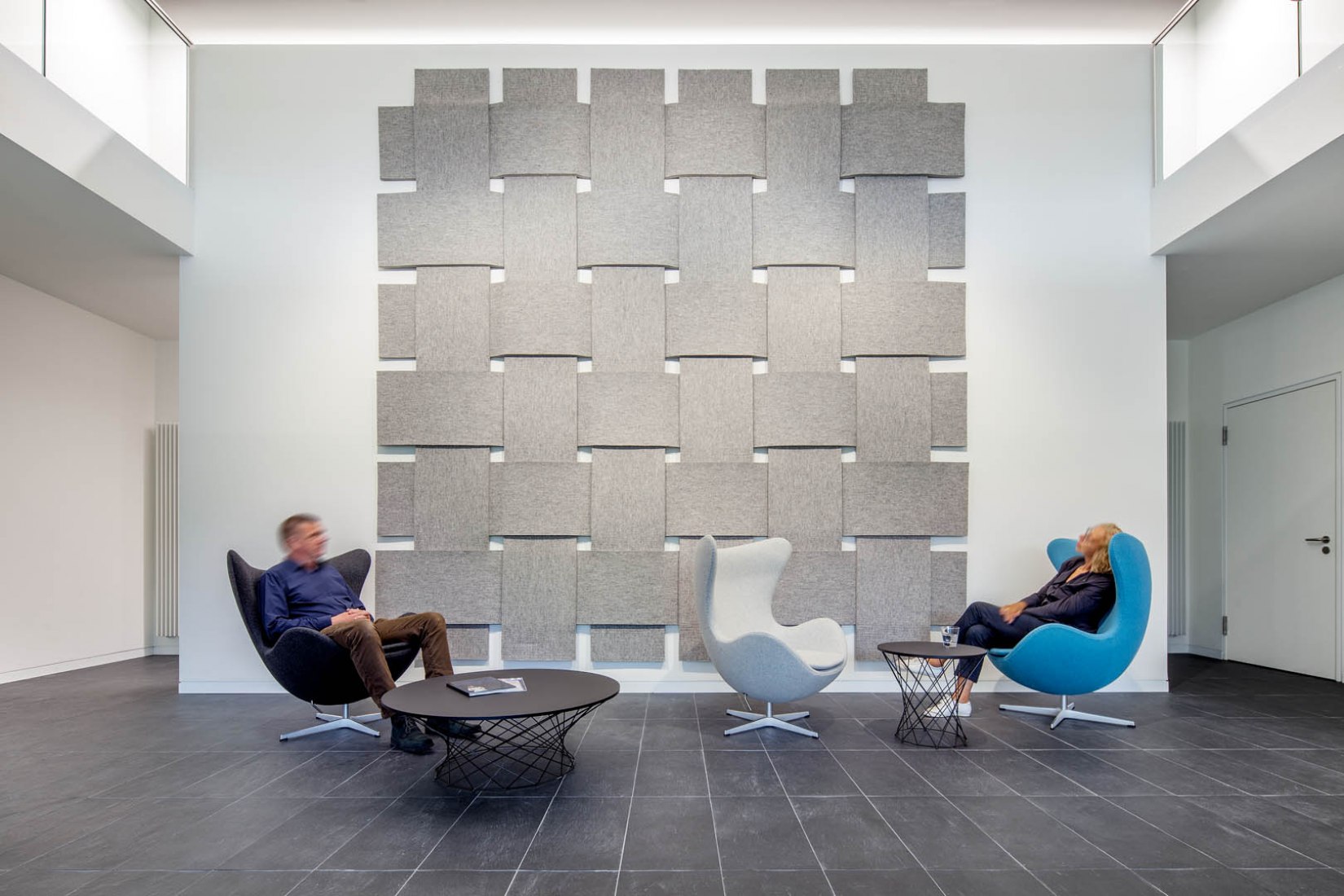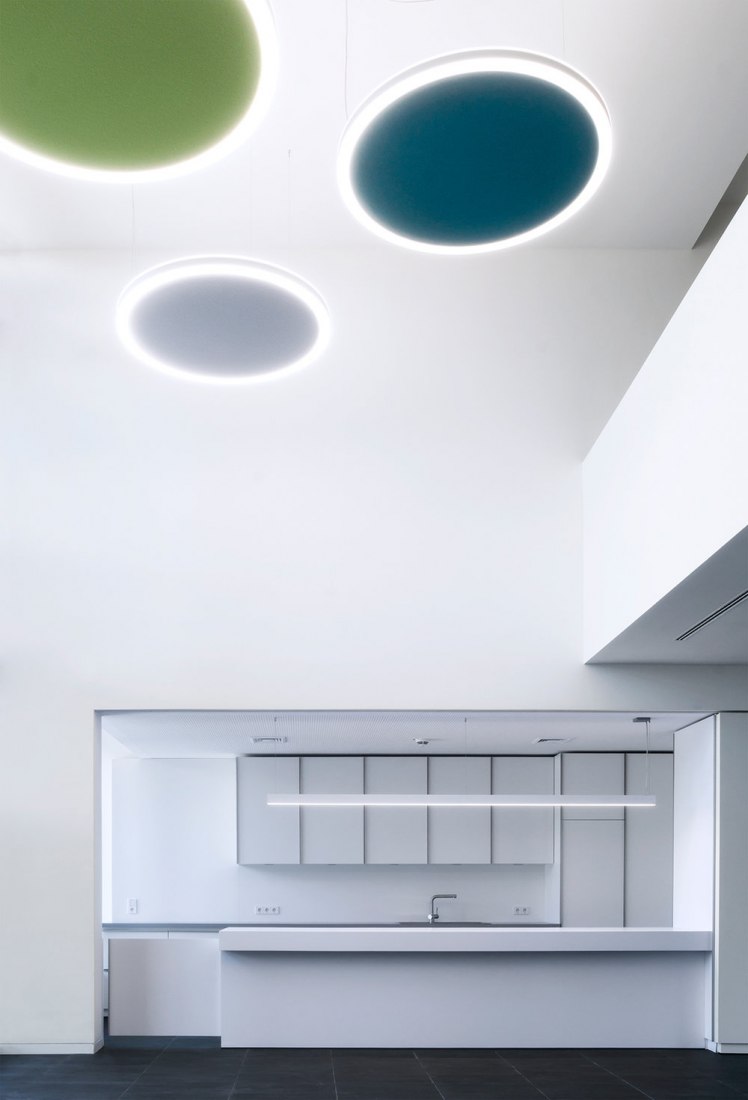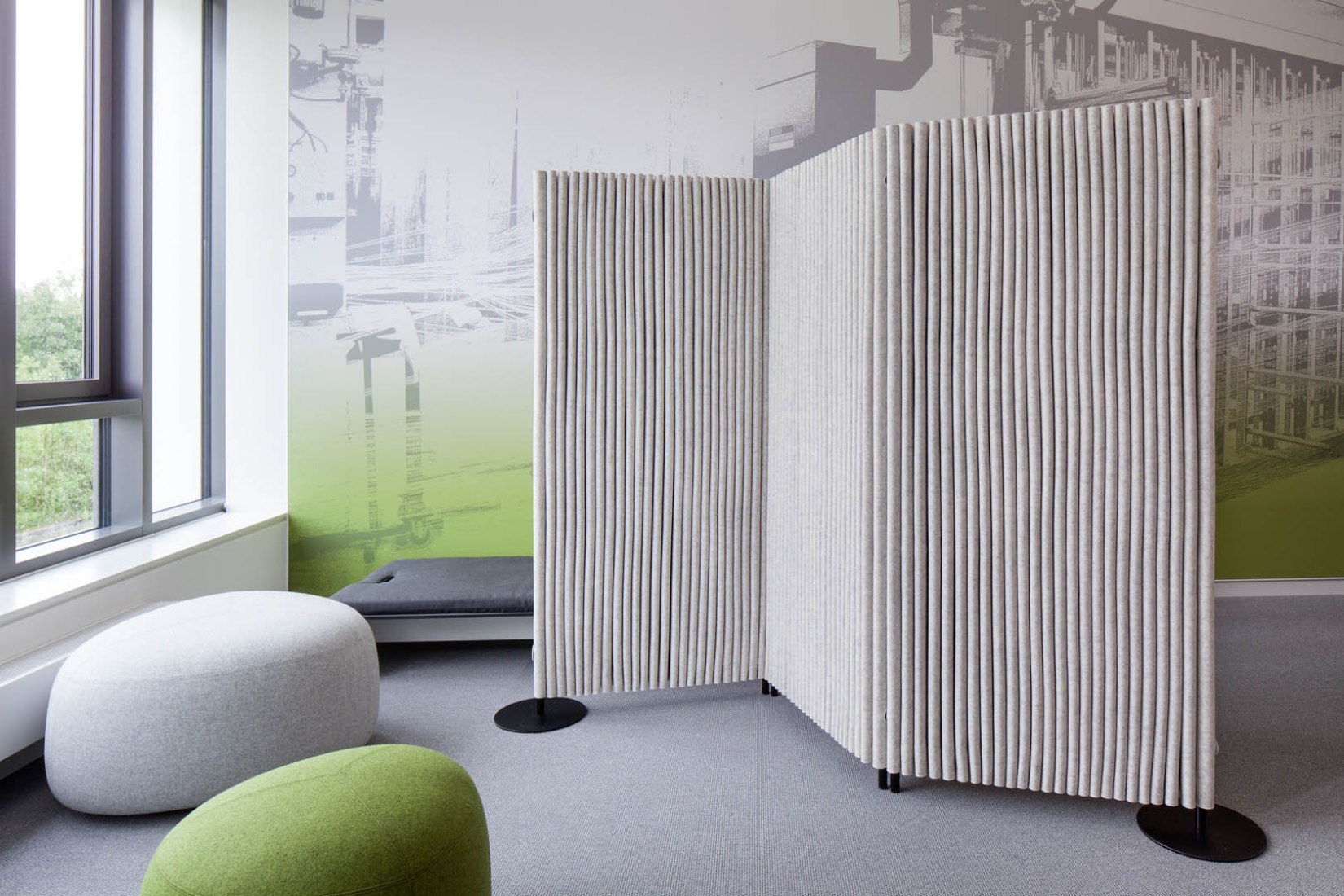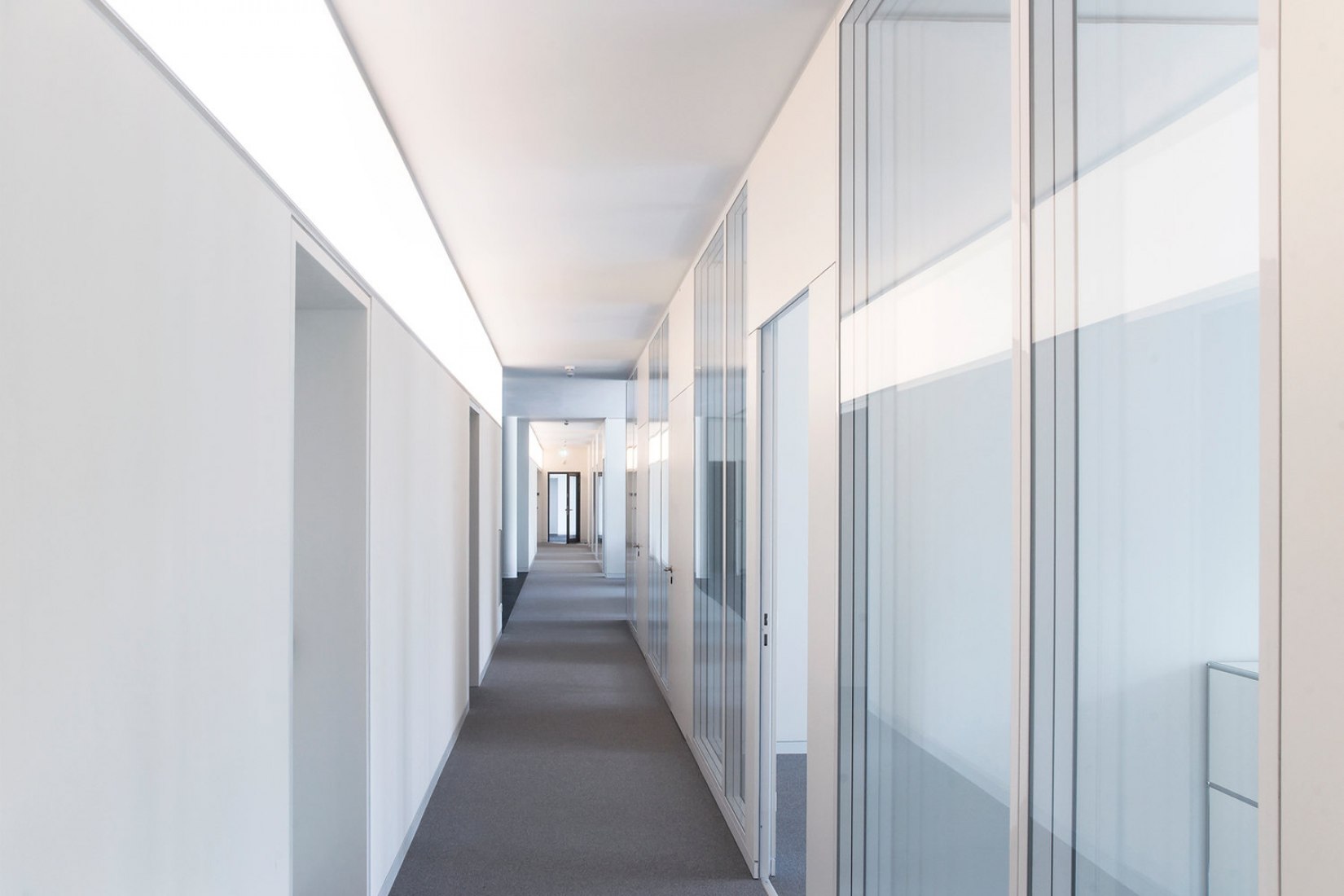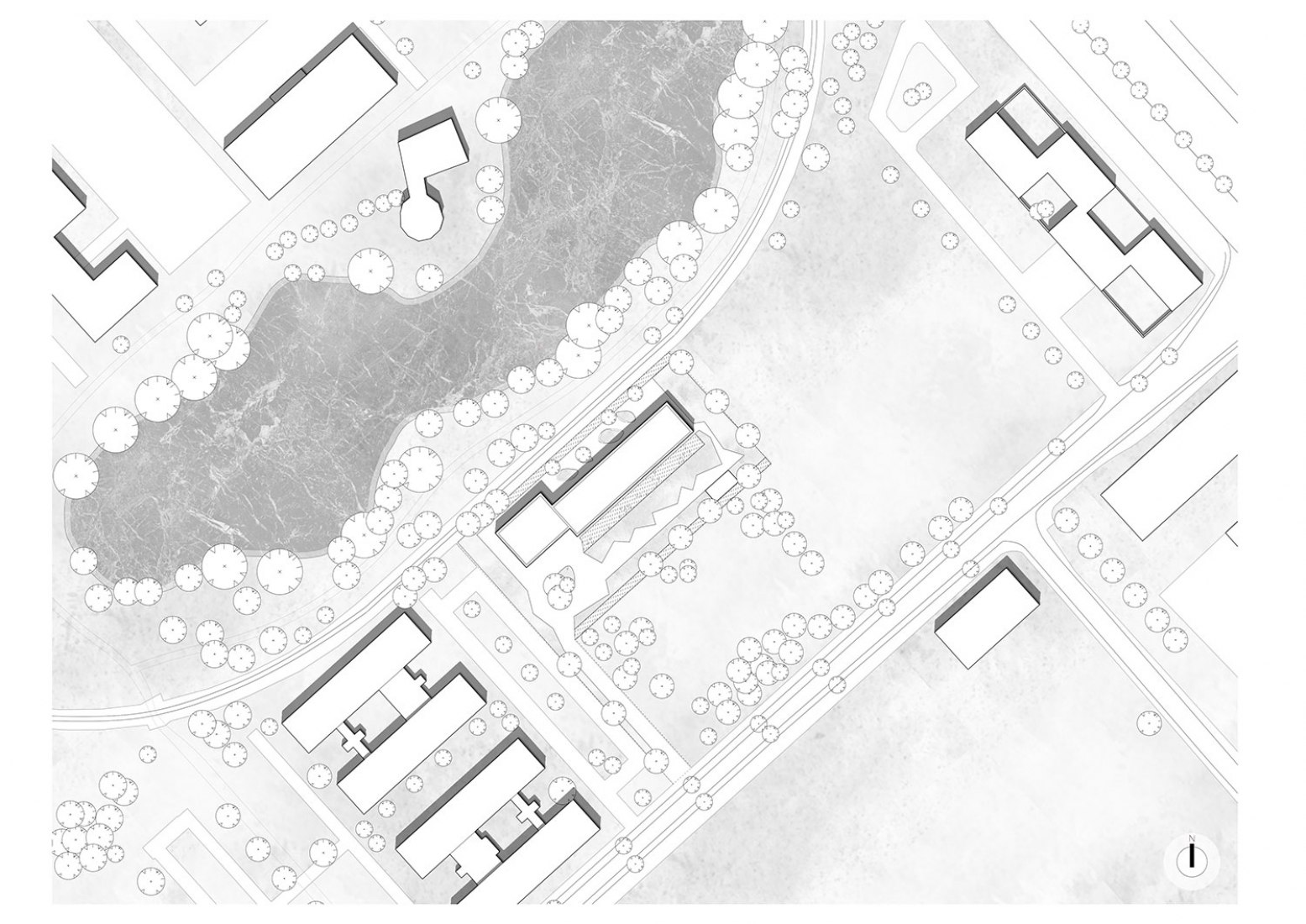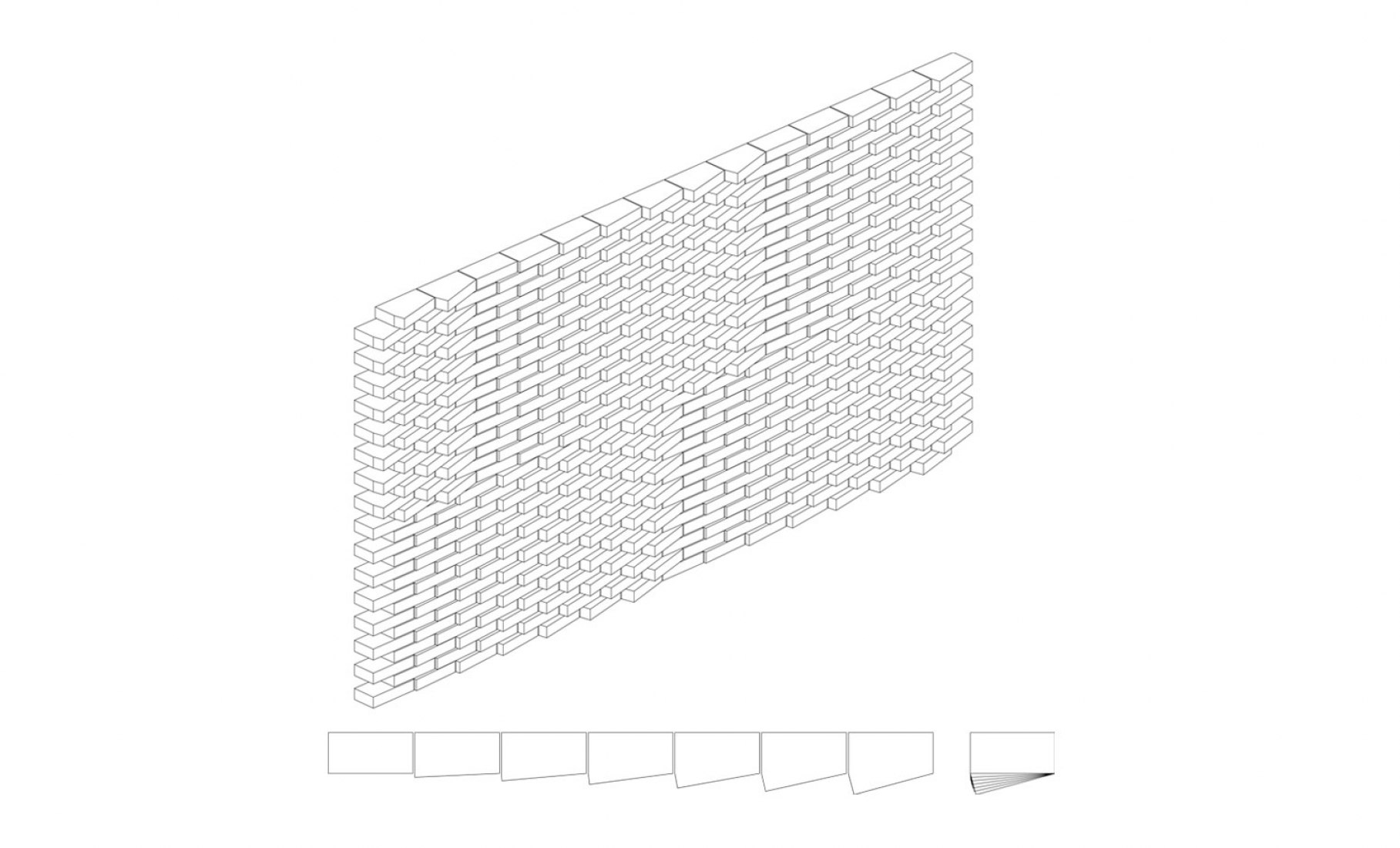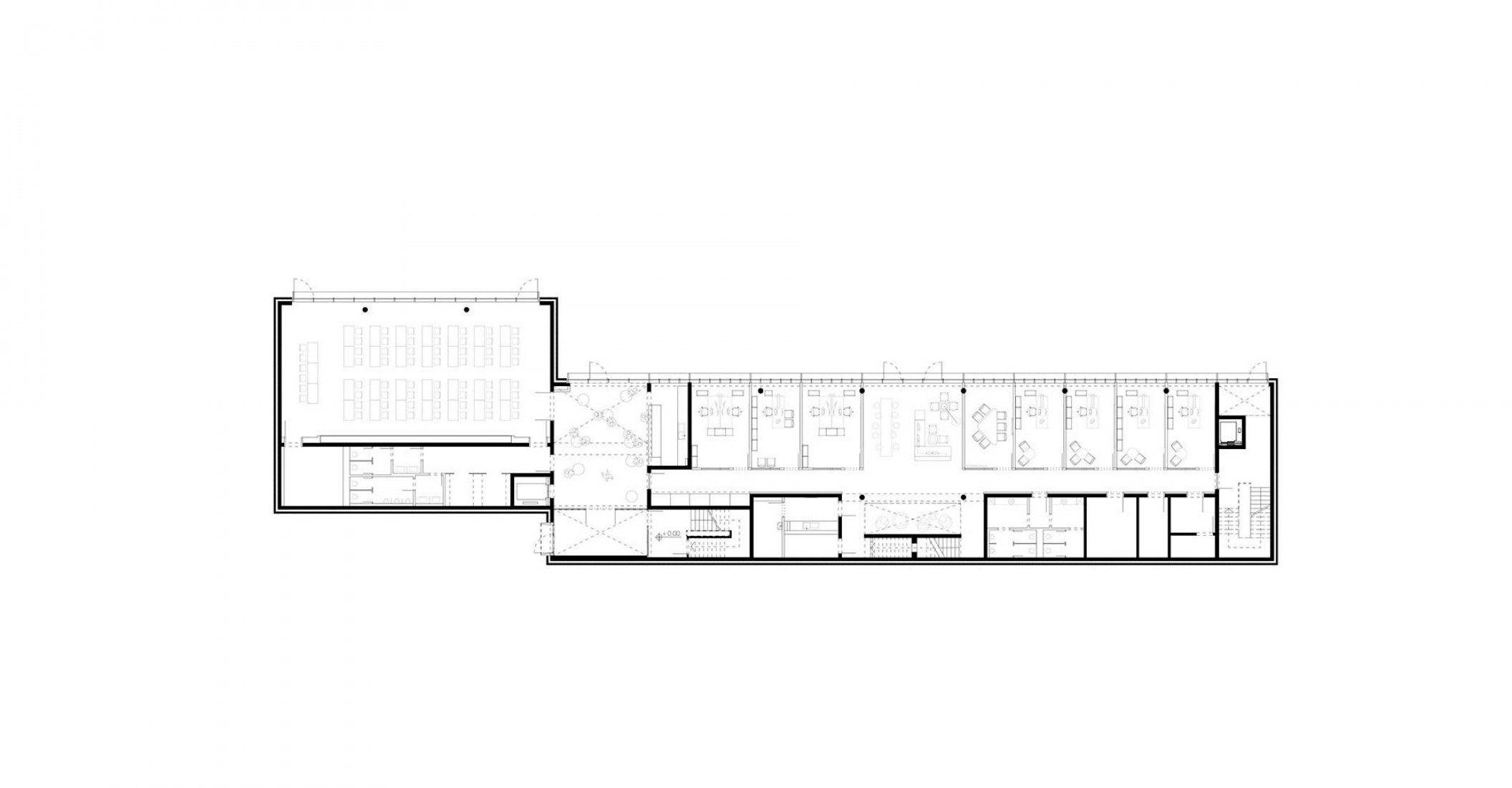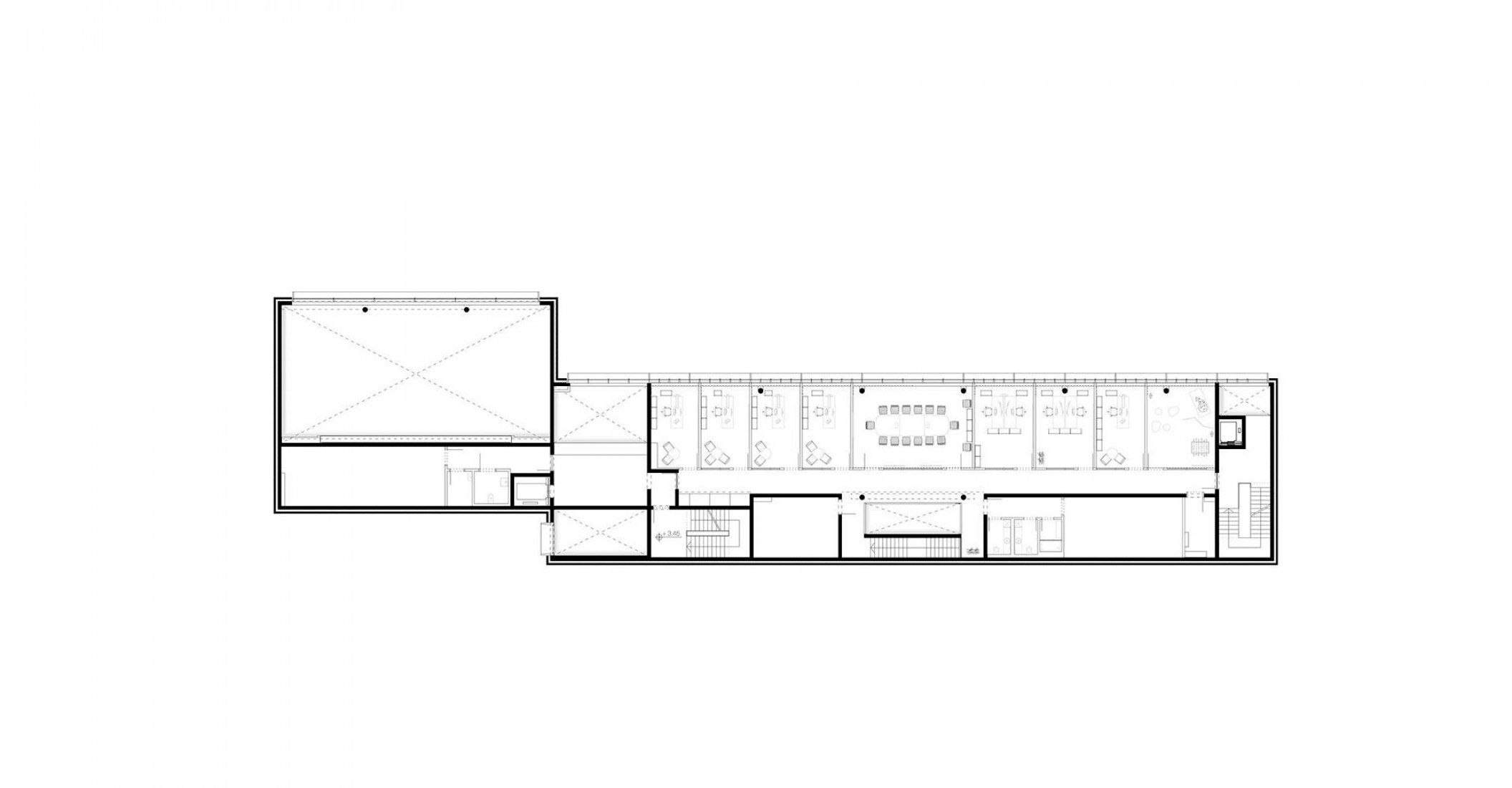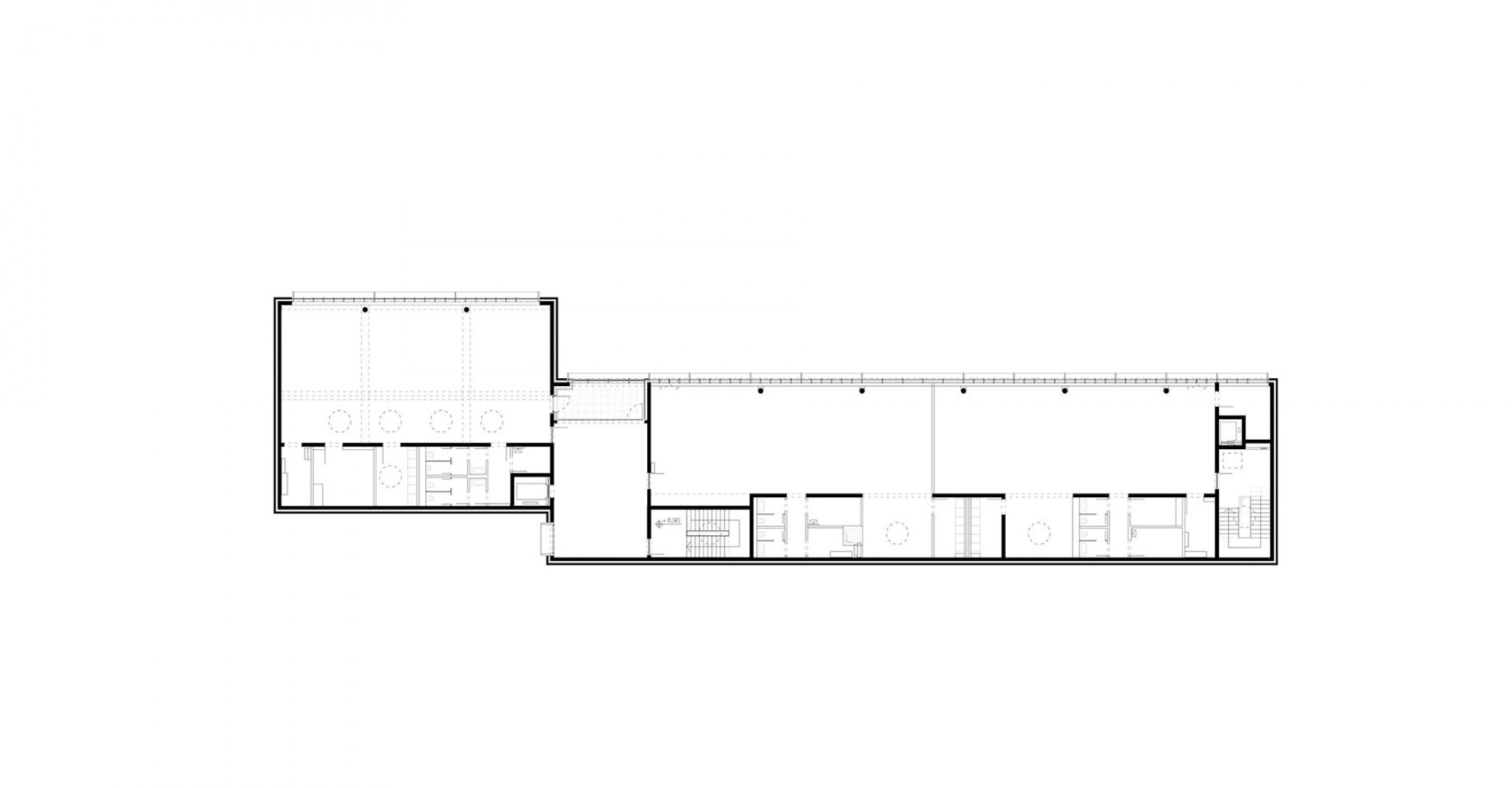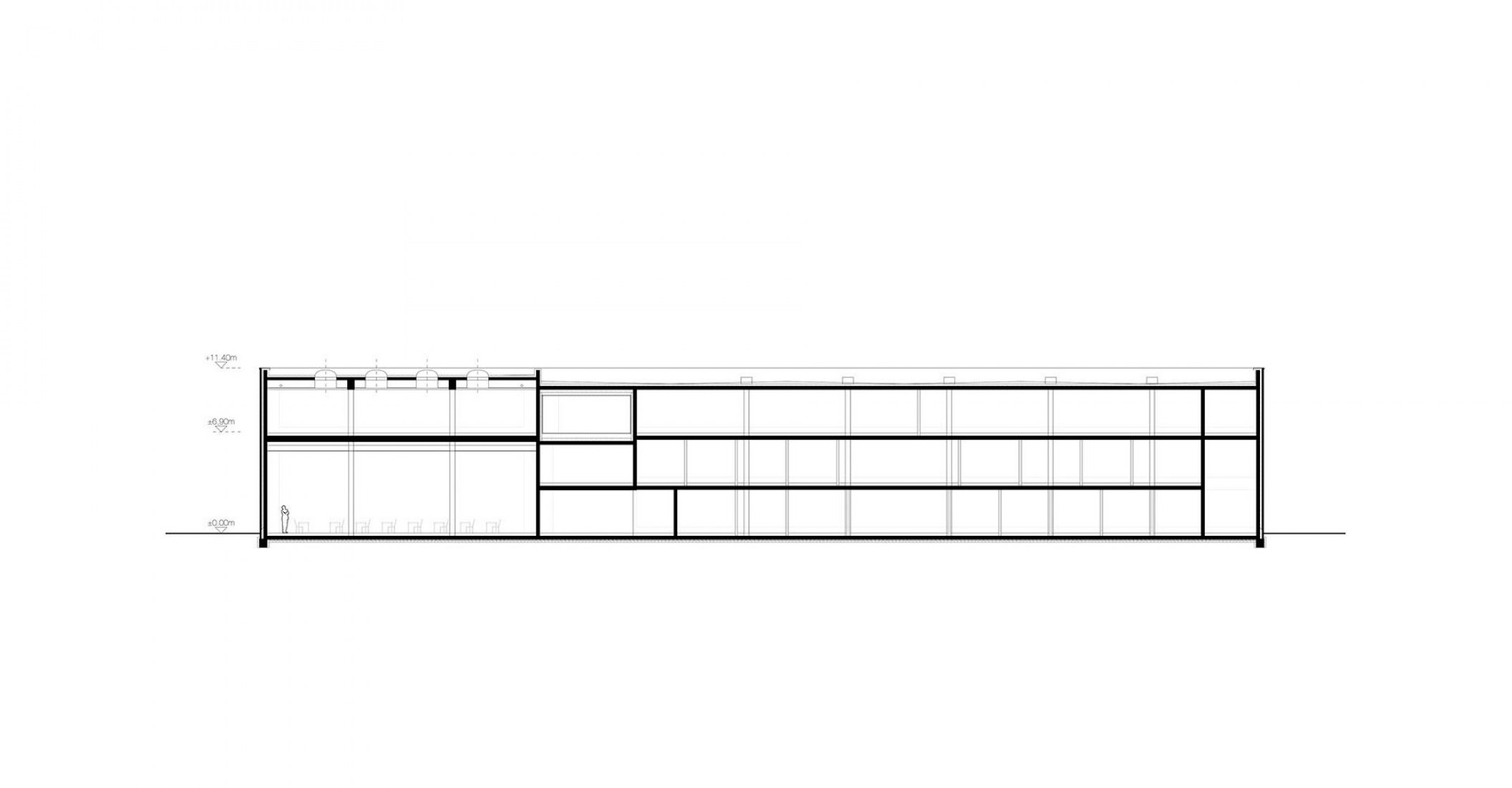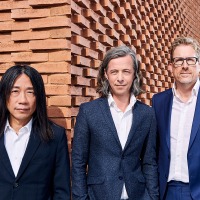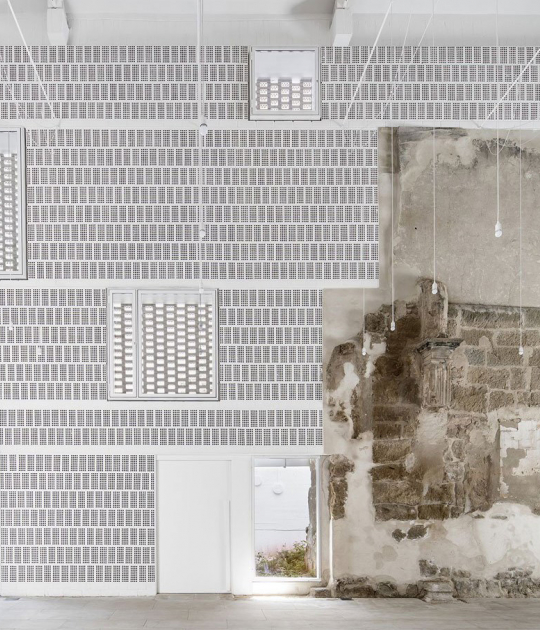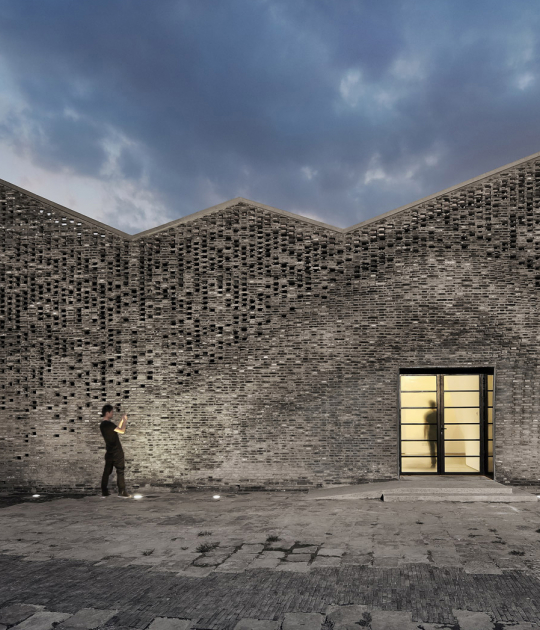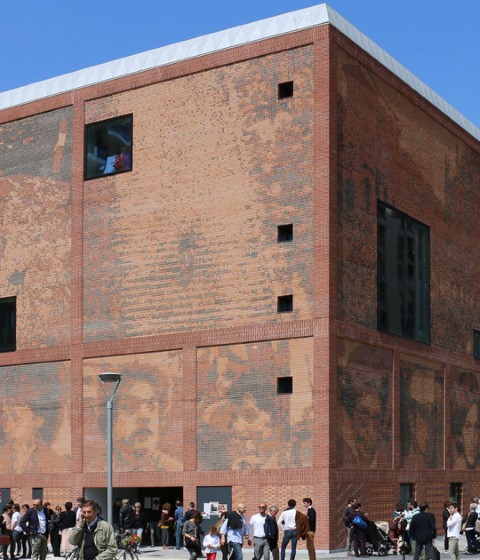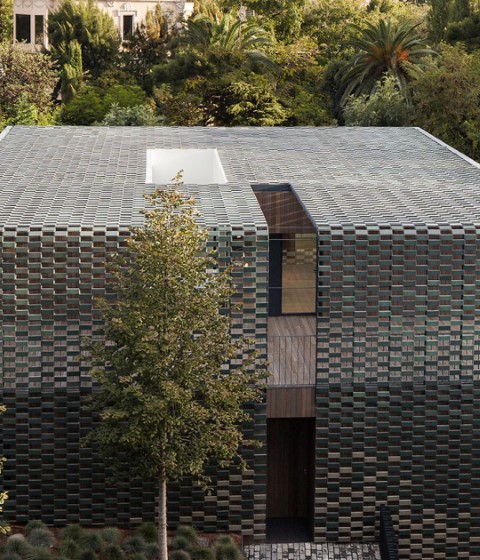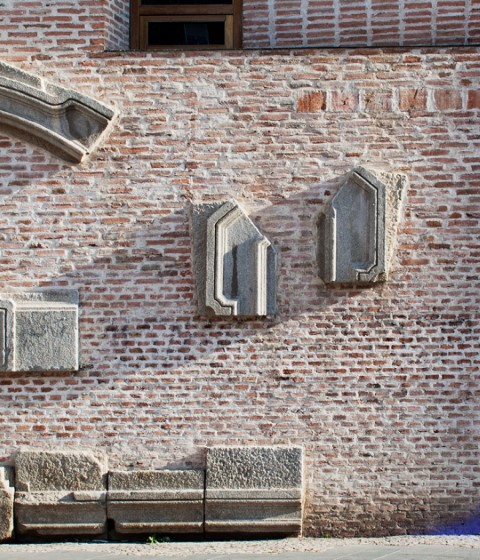Siguiendo esta imagen, Behet Bondzio Lin architekten emplea seis piedras especiales con un variaciones que aumenta en gradiente, creando una fachada de luces y sombras aparentemente en movimiento. La analogía con una tela ligera sobre la cual sopla el viento surge.
Descripción del proyecto por Behet Bondzio Lin architekten
El concepto de diseño del edificio para la Asociación de la Industria Textil y de Vestimenta del Noroeste Alemán tiene como objetivo proporcionar a todos los empleados una vista del pintoresco paisaje del norte y dar la bienvenida a aquellos que llegan del sur con una imagen textil fuerte.
La estructura alargada está rodeada por tres lados por una fachada de ladrillo completamente cerrada. El volumen, cerrado hacia el este, sur y oeste y abierto hacia el norte, es la base de un edificio de oficinas optimizado para la energía.
La inspiración para la fachada de ladrillo es el doblez de alabastro de la estatua de Beethoven de Max Klinger, que se encuentra en el Museo de Fotografía de Leipzig. Max Klinger creó una percepción paradójica aquí. El espectador ve una bufanda ligera aparentemente fluida sobre las rodillas de Beethoven y reconoce al mismo tiempo que consiste en piedra sólida.
Siguiendo esta imagen, behet bondzio lin architekten emplea seis piedras especiales con un variaciones que aumenta en gradiente, creando una fachada de luces y sombras aparentemente en movimiento. La analogía con una tela ligera sobre la cual sopla el viento surge.
La separación y el fácil movimiento del volumen del edificio crea un área previa que recibe a los usuarios y visitantes y los conduce al edificio. Al norte, se abre casi por completo sobre una fachada de vidrio al paisaje excepcionalmente hermoso. Debido a la orientación norte, todas las habitaciones cuentan con luz natural y no requieren protección solar. Esto permite incluso en pleno verano la visión a tiempo completo de los empleados en el campo.
---
The design concept of the building for the Association of the Northwest German Textile and Garment Industry aims to provide all employees with a view of the picturesque landscape to the north and to welcome those arriving from the south with a strong textile image.
The elongated structure is enclosed on three sides by a completely closed brick façade. The volume, closed to the east, south and west and open to the north, is the basis for an energy-optimized office building.
The inspiration for the brick facade is the alabaster fold of the Beethoven statue by Max Klinger, which is in the Leipzig Picture Museum. Max Klinger created a paradoxical perception here. The viewer sees a seemingly fluent light scarf over the knees of Beethoven and recognizes at the same time that it consists of solid stone.
Following this image, behet bondzio lin architekten employ six special stones with a gradient that increases in gradient, creating a seemingly moving façade of light and shadow. The analogy to a light cloth over which the wind blows arises.
The separation and easy movement of the building volume creates a pre-area that receives the users and visitors and leads them into the building. To the north it opens almost completely over a glass facade to the exceptionally beautiful landscape. Due to the north orientation, all rooms are well supplied with daylight and do not require sun protection. This allows even in midsummer the full-time view of the employees in the countryside.
